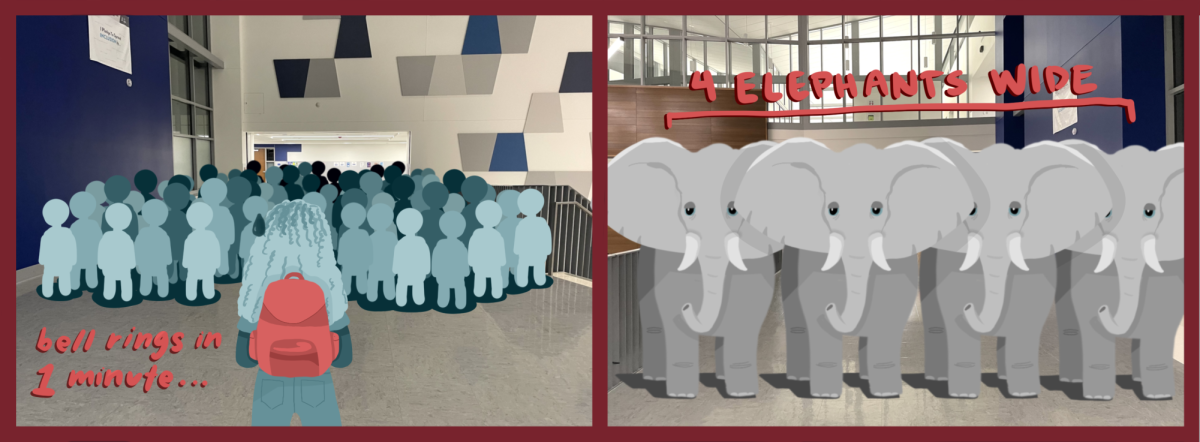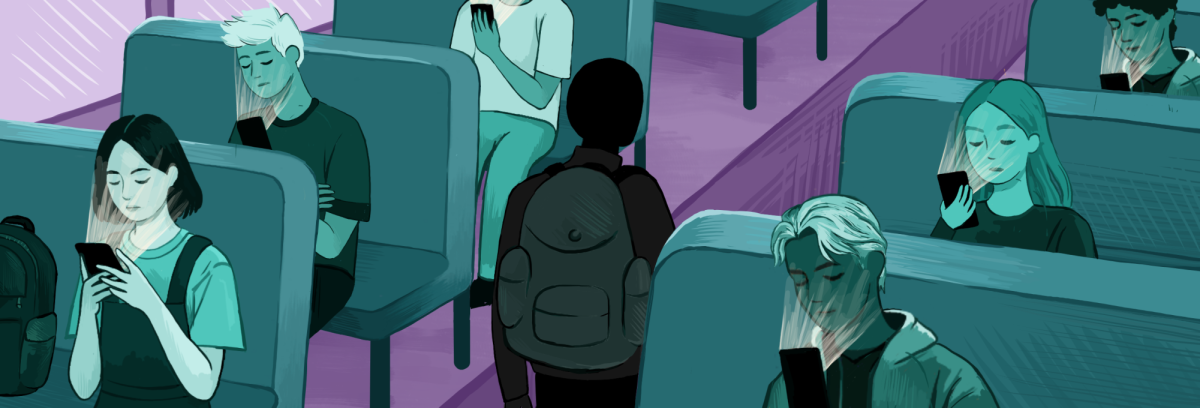In April 2016, Ladue School District voters approved Proposition R: the 64-year-old high school building would undergo massive renovations, modernization, new facilities and a doubled square footage to accommodate a larger student body. The main architecture firm, Hastings + Chivetta, states that “common spaces [were] reconfigured to address widespread problems of accessibility, wayfinding, visibility and security.” So why is it that the hallways are still densely crowded and difficult to navigate?
The answer is, often, poor hallway conduct. Poor hallway conduct, or poor behavior in hallways, leads to crowding, tardiness and stress. But students have the power to fix that.
If students are impeding the flow of traffic, especially at the confluence of multiple hallways, all surrounding students are impacted. With two-lane traffic from three hallways and one staircase, the hallway overlooking the student entrance is one of the busiest spots in the school. To accommodate the foot traffic, it’s large: about 20 feet by 47 feet. The width is enough to fit four large adult male elephants or park 8 Toyota Camrys. But the large hallway isn’t just for students going to class; the spot is also a hub for passing period conversation.
When students gather in the middle of the hallway to talk, everyone walking must circumnavigate the group. That means that someone walking to the library, for example, may have to cut into cafeteria-bound traffic to avoid the static group. When the cafeteria-bound traffic is obstructed, they too must find a new path in a hallway filled with people. The result is a slow, dense and inefficient passage. That crowding causes other problems. Namely, tardiness and stress.
With only five minutes between classes, every second of a passing period counts. Those five minutes aren’t just for travelling; they can also be for reorganizing and reflecting before and after class. So when students are slowed in crowded hallways, they lose vital time.
The loss of that time can be a stressor, but so can the hallways themselves. A 2023 article in Scientific Reports found that moving in increased density, and thus less space, can lead to increased stress levels. Passing periods should provide breaks between classes, not exacerbate anxieties.
When students gather to talk because they would like to have a conversation, they are doing so at the expense of everyone nearby — disrespecting their time, their emotions and their personal space.
By following basic guidelines, students can create a healthier environment. First, don’t stop in the middle of the hallway. If you’re walking and talking with friends, avoid standing shoulder-to-shoulder and never take up more than half of the hallway. Follow the pace of the person in front of you and don’t block any stairs or doors. If possible, walk on the right side of the hallway.
The student body shares one building. It’s necessary that students use it with their peers in mind by following basic hallway rules to support a respectful school.









